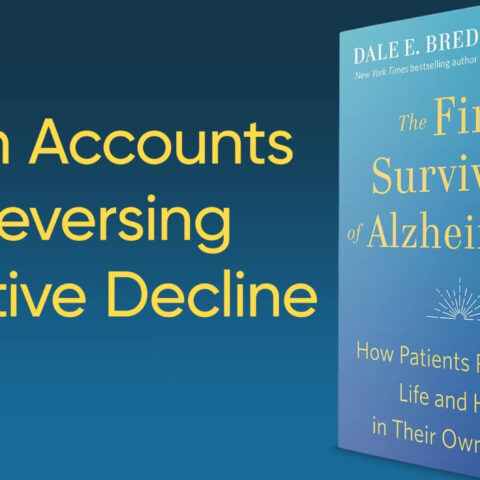Dietary Considerations for Migraine and Headache Relief

Nearly everyone gets a headache now and then. But migraines are a different beast—often more intense, longer lasting, and accompanied by symptoms like nausea, light sensitivity, or visual disturbances. With an estimated 1.1 billion people affected globally, migraines are the second leading cause of disability worldwide.1,2
Whether you’re navigating the occasional tension headache or regular migraine attacks, you know how disruptive they can be. While medication and lifestyle changes can help manage symptoms, your diet may play one of the most powerful roles in headache relief and prevention.
Research suggests that certain foods and eating habits can influence the frequency and severity of migraine attacks. Some may act as triggers, while others support blood sugar balance, hydration, and inflammation regulation—all key in managing headaches. If you’re looking for more control over your symptoms, your plate is a smart (and empowering) place to start.
Foods That Trigger Migraines & Headaches
There’s no universal list of foods that trigger migraines—what affects one person may not affect another. That’s why tracking what you eat and how you feel can be so revealing.
That being said, registered dietitian Trista Best, MPH, RDN, shares some of the most common migraine triggers:
- Cured or nitrate-rich meats (like hot dogs, bacon, and deli meats).3
- Monosodium glutamate (MSG), a common flavor enhancer in processed or packaged foods4 (if you’re sensitive to MSG, be aware that it exists in many foods, including some whole foods like meats, eggs, fruits, and vegetables).
- Artificial sweeteners, especially aspartame and sucralose.5
- Tyramine, a compound found in aged cheeses, fermented foods, and some fresh-baked breads.6
- Phenylethylamine, found in chocolate, citrus fruits, soy products, nuts, and vinegar.7
- Alcohol, particularly red wine and beer.
- Dairy products, including ice cream, which may also cause a “cold-stimulus headache.”
- Caffeine, both in excess and during withdrawal.8
- Histamine-containing foods, such as aged or fermented items, dried fruits, and wine.9
- Gluten, a protein found in wheat, barley, and rye (especially for those with sensitivities or intolerances).10
- Certain vegetables, like tomatoes and onions, which some people find triggering.
Nutrients That May Help Prevent Headaches
While triggers tend to get the most attention, certain nutrients may actually reduce the frequency or severity of headaches. Below are a few worth prioritizing for migraine or headache relief and prevention.
Magnesium
Magnesium plays a critical role in nerve function and blood vessel regulation—and not getting enough of it may increase your risk of migraines. In fact, multiple studies have found a link between low magnesium intake and higher migraine frequency.11,12
Good sources: dark leafy greens (like spinach or Swiss chard), avocados, tuna, bananas, nuts, and seeds. Although dark chocolate is high in magnesium, it can be a trigger for some people. The research isn’t conclusive, so it’s worth tracking your personal response.13
Omega-3 Fatty Acids
These healthy fats offer anti-inflammatory benefits that may help reduce migraine frequency or severity.14
Good sources: fatty fish (salmon and mackerel), omega-3 enriched eggs, flaxseed, and walnuts.
Fiber
A recent study found that people who ate more fiber experienced fewer severe headaches or migraine attacks.15 While more research is needed, increasing your fiber intake is a smart move for overall health—and potentially your head, too.
Good sources: broccoli, asparagus, kale, sweet potatoes, carrots, coconut, almonds, berries, avocados.
Riboflavin (Vitamin B2)
Essential for brain energy metabolism, B2 has been shown to reduce migraine frequency.
Good sources: eggs, meat, and green vegetables.
Coenzyme Q10 (CoQ10)
This antioxidant supports cellular energy and may help prevent migraines—especially when combined with magnesium and B2.
Good sources: organ meats and fatty fish.
Vitamin D
Low vitamin D levels may be linked to more frequent migraines and can contribute to inflammation and poor magnesium absorption.16
Good sources: fatty fish, certain mushrooms, and via sun exposure (or supplementation if needed).
Electrolytes
Electrolyte imbalances can disrupt nerve signaling and increase inflammation. Be mindful to replenish them—especially if you’re sweating heavily or on a low-carb diet.
Good sources: coconut water, bone broth, avocados, bananas, lemons, limes, leafy greens, beets, celery.
Hydration and Meal Timing Matter
It’s not just what you eat—it’s how and when you eat that can affect your headaches. Skipping meals, going too long without food, or eating large, high-sugar meals without protein can trigger blood sugar crashes that contribute to migraines.
Hydration is just as important. Dehydration is a well-established migraine trigger.17 One study found that drinking more water significantly reduced both the severity and frequency of migraines in young adult women.18
To stay balanced:
- Eat balanced meals and snacks every 3–4 hours.
- Avoid fasting or extreme dieting.
- Drink enough water throughout the day.
- Replenish electrolytes during or after workouts.
- Start your day with a protein-rich breakfast.
Keeping a food and symptom journal may also help you identify patterns and make more informed choices.
Eating Habits for Migraine and Headache Relief
Along with managing individual triggers, adopting consistent, balanced eating habits can go a long way:
- Stick to regular mealtimes to maintain stable blood sugar levels.
- Focus on whole, nutrient-dense foods.
- Limit ultra-processed products.
- Read food labels for known migraine triggers like MSG, nitrates, and artificial sweeteners.
- Track symptoms alongside meals to find patterns.
According to Best, “Whole food-based, anti-inflammatory diets that support gut health may help reduce migraine frequency and severity.”
Not only does The Paleo Diet® naturally eliminate common triggers like gluten, dairy, and processed foods, it also emphasizes anti-inflammatory whole foods like greens, nuts, and fish—which can provide healthy fats, magnesium, and omega-3 fatty acids to help reduce migraines and headaches.
Get Help for Your Migraine and Headache Management
If you experience frequent or severe headaches, don’t try to manage it all on your own. A healthcare provider can help rule out underlying causes, tailor your treatment, and recommend medications or therapies for headache relief that work alongside your diet.
There’s no one-size-fits-all approach to eating for migraines, but understanding how food and lifestyle habits affect your body is a powerful step. With the right strategies—and a little trial and error—you can uncover patterns that help reduce headache frequency and severity while supporting your overall well-being.
References
- Amiri, P., Kazeminasab, S., Nejadghaderi, S. A., Mohammadinasab, R., Pourfathi, H., Araj-Khodaei, M., Sullman, M. J. M., Kolahi, A.-A., & Safiri, S. (2022). Migraine: A Review on Its History, Global Epidemiology, Risk Factors, and Comorbidities. Frontiers in Neurology, 12(800605). https://pmc.ncbi.nlm.nih.gov/articles/PMC8904749/
- Pescador Ruschel, M. A., & De Jesus, O. (2024). Migraine headache. PubMed; StatPearls Publishing. https://www.ncbi.nlm.nih.gov/books/NBK560787/
- Gonzalez, A., Hyde, E., Sangwan, N., Gilbert, J. A., Viirre, E., & Knight, R. (2016). Migraines Are Correlated with Higher Levels of Nitrate-, Nitrite-, and Nitric Oxide-Reducing Oral Microbes in the American Gut Project Cohort. MSystems, 1(5). https://pmc.ncbi.nlm.nih.gov/articles/PMC5080405/
- Ahdoot, E., & Cohen, F. (2023). Unraveling the MSG-Headache Controversy: an Updated Literature Review. Current Pain and Headache Reports, 28. https://pubmed.ncbi.nlm.nih.gov/38079074/
- Wissam Ghusn, Naik, R., & Yibrin, M. (2023). The Impact of Artificial Sweeteners on Human Health and Cancer Association: A Comprehensive Clinical Review. Cureus, 15(12). https://pmc.ncbi.nlm.nih.gov/articles/PMC10822749/
- Burns, C., & Kidron, A. (2020). Biochemistry, Tyramine. PubMed; StatPearls Publishing. https://www.ncbi.nlm.nih.gov/books/NBK563197/
- Araújo, A. C. M. F., Araújo, W. M. C., Marquez, U. M. L., Akutsu, R., & Nakano, E. Y. (2016). Table of Phenylalanine Content of Foods: Comparative Analysis of Data Compiled in Food Composition Tables. JIMD Reports, 87–96. https://pmc.ncbi.nlm.nih.gov/articles/PMC5509543/
- Zduńska, A., Cegielska, J., Zduński, S., & Domitrz, I. (2023). Caffeine for Headaches: Helpful or Harmful? A Brief Review of the Literature. Nutrients, 15(14), 3170. https://pmc.ncbi.nlm.nih.gov/articles/PMC10385675/
- Histamine Intolerance. (n.d.). Cleveland Clinic. https://my.clevelandclinic.org/health/diseases/histamine-intolerance
- Holmes, G. (2021). Co-morbidities associated with non-coeliac gluten sensitivity. Gastroenterology and Hepatology from Bed to Bench, 14(4), 291. https://pmc.ncbi.nlm.nih.gov/articles/PMC8514220/
- Slavin, M., Li, H., Khatri, M., & Frankenfeld, C. (2021). Dietary magnesium and migraine in adults: A cross‐sectional analysis of the National Health and Nutrition Examination Survey 2001–2004. Headache: The Journal of Head and Face Pain. https://pubmed.ncbi.nlm.nih.gov/33503279/
- Kandil, M., Jaber, S., Desai, D., Nuñez Cruz, S., Lomotan, N., Ahmad, U., Cirone, M., Burkins, J., & McDowell, M. (2021). MAGraine: Magnesium compared to conventional therapy for treatment of migraines. The American Journal of Emergency Medicine, 39, 28–33. https://pmc.ncbi.nlm.nih.gov/articles/PMC7489225/
- Nowaczewska, M., Wiciński, M., Kaźmierczak, W., & Kaźmierczak, H. (2020). To Eat or Not to eat: A Review of the Relationship between Chocolate and Migraines. Nutrients, 12(3), 608. https://pmc.ncbi.nlm.nih.gov/articles/PMC7146545/
- Sanders, A. E., Shaikh, S. R., & Slade, G. D. (2018). Long-chain omega-3 fatty acids and headache in the U.S. population. Prostaglandins, Leukotrienes and Essential Fatty Acids, 135, 47–53. https://www.sciencedirect.com/science/article/abs/pii/S0952327818300723
- Huang, H., & He, K. (2023). The association between dietary fiber intake and severe headaches or migraine in US adults. Frontiers in Nutrition, 9. https://pmc.ncbi.nlm.nih.gov/articles/PMC9846638/
- Nowaczewska, M., Wiciński, M., Osiński, S., & Kaźmierczak, H. (2020). The Role of Vitamin D in Primary Headache–from Potential Mechanism to Treatment. Nutrients, 12(1), 243. https://pmc.ncbi.nlm.nih.gov/articles/PMC7019347/
- Arca, K. N., & Halker Singh, R. B. (2021). Dehydration and Headache. Current Pain and Headache Reports, 25(8). https://pmc.ncbi.nlm.nih.gov/articles/PMC8280611/
- Khorsha, F., Mirzababaei, A., Togha, M., & Mirzaei, K. (2020). Association of drinking water and migraine headache severity. Journal of Clinical Neuroscience, 77, 81–84. https://pubmed.ncbi.nlm.nih.gov/32446809/
Maureen Farrar
Maureen Farrar has spent more than 20 years as a writer and editor for several print and digital outlets. She writes about health, fitness and nutrition.
More About The Author




